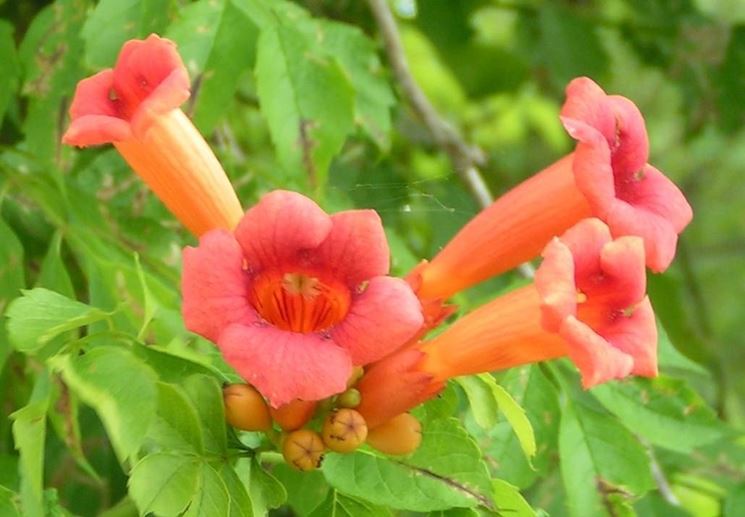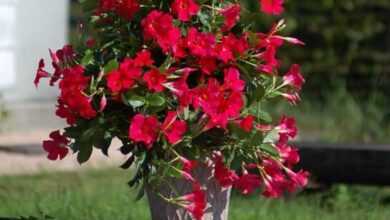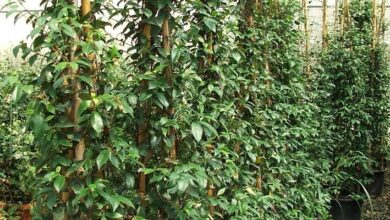Bignonia (campsis radicans)

Plants and adaptation

Climbing plants

If we want to discuss the extraordinary adaptations of the plant world, there would be arguments and cases to talk about for months, without exaggerating! It is clear that some cases are striking, such as that of succulents: the «succulents» (this is the scientific name) to survive in arid deserts have learned to store water in periods of fat, conserving it and reducing it to a minimum the use and losses (for example by transforming the leaves into thorns, in order to reduce the surface and therefore the losses due to evaporation) in order to have them available even when there is no water in the environment at all. Next to this extraordinary example we like to put climbing plants: they, grown and evolved in environments where the soil did not offer guarantees of substances, they literally transformed the roots into holds, in order to grow by binding themselves to vertical walls or trunks. That said, it does not seem extraordinary, but just think that almost all climbing plants not only exploit the «tightening» force of the aerial roots wrapped around the trunks to support themselves, but also use the suckers they have in the roots. You got it right, suckers! If this is not extraordinary …
Bignonia (campsis radicans)
Among the many climbing plants that surround us (of which many are not native to our lands, however they have adapted very well also because they have great adaptive capacity and also live in the air and this is good or bad similar everywhere), the most famous and appreciated are those of the genus Bignonia: this plant is a thick, fast and colorful climbing plant that we can find on the walls of many buildings, especially near well-kept private gardens. It is possible to recognize it by its flowers with an intense color and belonging to the chromatic ranges between yellow and red (therefore it also has orange shades): they have the shape of an elongated bell, with five petals ending with a slight turn towards the external. In reality, the bignonia that we commonly define is the «campsis radicans», belonging precisely to the genus Campsis; these two genera, the Bignonia and the Campsis are very similar to each other, in fact the radicans first belonged to the Bignonie and only recently has been definitively classified at the Campsis. Obviously the name of the plant in the popular field has not changed, and in any case it must be emphasized that these two genera are really very similar, also for the growth characteristics. What varies the most is in the shape of the flowers (the colors instead are of the same range) and in their life cycle, which for some sees blooms in early summer and for others even in the middle of autumn. in fact the radicans first belonged to the Bignonie and only recently has it been definitively classified at the Campsis. Obviously the name of the plant in the popular field has not changed, and in any case it must be emphasized that these two genera are really very similar, also for the growth characteristics. What varies the most is in the shape of the flowers (the colors instead are of the same range) and in their life cycle, which for some sees blooms in early summer and for others even in the middle of autumn. in fact the radicans first belonged to the Bignonie and only recently has it been definitively classified at the Campsis. Obviously the name of the plant in the popular field has not changed, and in any case it must be emphasized that these two genera are really very similar, also for the growth characteristics. What varies the most is in the shape of the flowers (the colors instead are of the same range) and in their life cycle, which for some sees blooms in early summer and for others even in the middle of autumn.
Uses and details
Let’s say that Campsis radicans has the recognizable characteristic in the leaves, which have a very light serrated margin that distinguishes them from those of the genus Bignonia; not only that, this plant that we are evaluating more in depth has a chromatic range that tends more to red than yellow, that is, the color of its flowers is either orange or red, with few shades. For the rest, Campsis radicans is a classic climber: it has strong aerial roots, which go in search of walls, pergolas, trunks, poles and any architectural piece that can allow them to climb vertically, distancing themselves from the ground, to which, however, they always remain linked. with a part of the plant, we say that it is the development that points upwards. Well, they are used as decoration, because they have a great power of growth:




